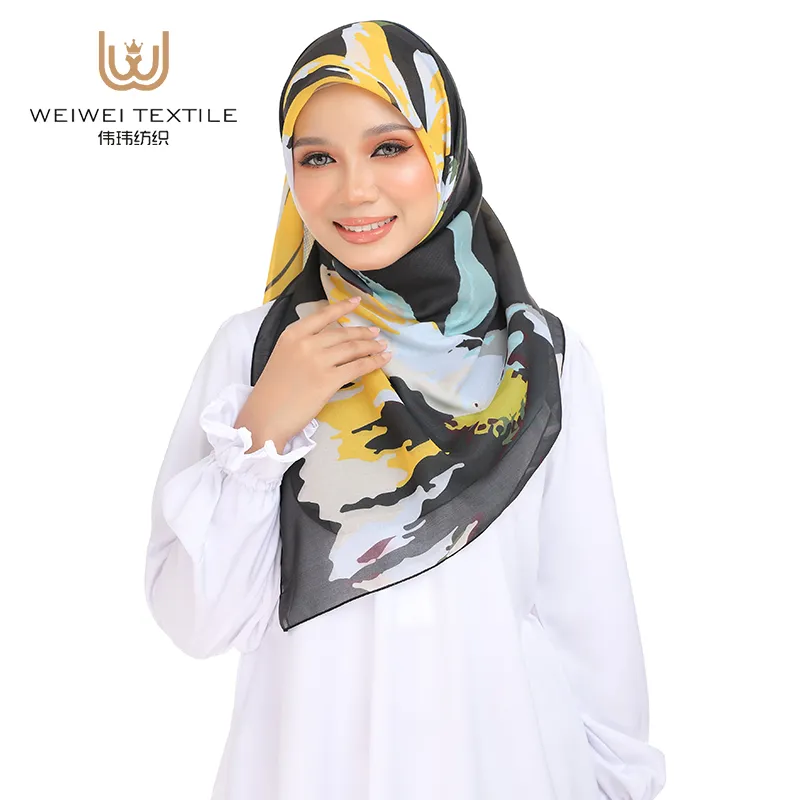Oct . 19, 2024 10:26 Back to list
arabic headgear male
The Cultural Significance of Arabic Headgear for Men
Arabic headgear for men, often referred to as ghutrah, keffiyeh, or agal, is not merely a fashion statement; it is a profound emblem of identity, heritage, and social status in various Arab cultures. This fascinating piece of attire carries with it a wealth of historical significance and cultural meaning, reflecting the traditions and values of the regions in which it is worn.
Historical Background
The origins of Arabic headgear can be traced back to the nomadic tribes of the Arabian Peninsula. Historically, the harsh desert climate necessitated protective clothing that could shield individuals from the sun's scorching rays and the biting winds of the desert. The headgear served practical purposes, helping to maintain body temperature and protect against sandstorms.
As time progressed, these functional items evolved into symbols of cultural identity. Different styles and colors of headgear came to represent various tribes, regions, and social classes, distinguishing individuals based on their heritage and background. The evolution of the headgear also underscores the rich tapestry of Arab history, marked by trade routes, conquests, and the intermingling of cultures.
Types of Arabic Headgear
1. Ghutrah/Keffiyeh The ghutrah, often seen in white or checked patterns, is a traditional Arab headscarf. It is usually made of cotton and is designed to be worn loosely around the head. When worn in its classic style, it offers ample shade from the sun while allowing air circulation. The traditional white ghutrah is commonly worn in the Arabian Gulf, while the black and white checked variant, known as the keffiyeh, is popular in regions like Palestine and Jordan. The keffiyeh is often infused with political significance, symbolizing resistance and national identity.
2. Agal The agal is a black cord that holds the ghutrah or keffiyeh in place, serving both a functional and decorative purpose. It signifies elegance and has been adopted widely among men across the Arab world. The agal is typically worn by men who wish to present themselves as dignified and cultured. Its presence complements the headgear, adding an element of sophistication.
3. Taqiyah The taqiyah, or skullcap, is another form of headgear worn by men, particularly during prayers and religious observances. Traditionally made of cotton or wool, the taqiyah serves as a sign of piety and respect during religious practices.
arabic headgear male

Cultural Symbolism
In many Arab societies, the style, color, and manner in which headgear is worn can convey messages about social status, tribal affiliation, and even political stance. For example, a white ghutrah paired with a black agal can symbolize modesty and adherence to tradition, while a brightly colored or patterned ghutrah may indicate a more contemporary or cosmopolitan approach to fashion.
The headgear often plays a critical role during cultural celebrations, weddings, and other significant life events, signaling a connection to ancestral roots and heritage. In some Gulf nations, men may wear particular styles of headgear to represent their family lineage or tribe, solidifying group identity and solidarity.
Global Impact and Modern Interpretations
In recent years, there has been a resurgence of interest in Arabic headgear, both regionally and globally. The influence of social media, fashion shows, and celebrity endorsements has helped propel traditional styles into modern wardrobes. International designers have incorporated elements of Arabic headgear into their collections, merging traditional aesthetics with contemporary fashion.
Moreover, the keffiyeh's association with resistance and activism has transformed it into a global symbol of solidarity and struggle for various social movements. Its recognizable pattern has transcended cultural boundaries and is now embraced by people worldwide, often as a sign of unity and support for oppressed communities.
Conclusion
The significance of Arabic headgear for men goes far beyond mere utility; it encapsulates centuries of history, culture, and identity. As it continues to evolve and adapt to modern contexts, the ghutrah, keffiyeh, and agal remind us of the enduring power of clothing as a means of expression and connection. Understanding the cultural nuances of Arabic headgear allows us to appreciate the richness of Arab identity and the diverse tapestry of human experience that clothing can represent.
-
Traditional Tudung Designs in Malaysia
NewsJul.25,2025
-
The Spiritual Significance of Satin in Muslim Attire
NewsJul.25,2025
-
The Right Way to Wear Arab Scarves for Muslim Women
NewsJul.25,2025
-
Zikr Bead-Infused Cotton Voile for Continuous Remembrance
NewsJul.11,2025
-
The Cultural Significance of Tudung in Malaysia
NewsJul.11,2025
-
Satin Hijabs as an Expression of Faith in Daily Life
NewsJul.11,2025














